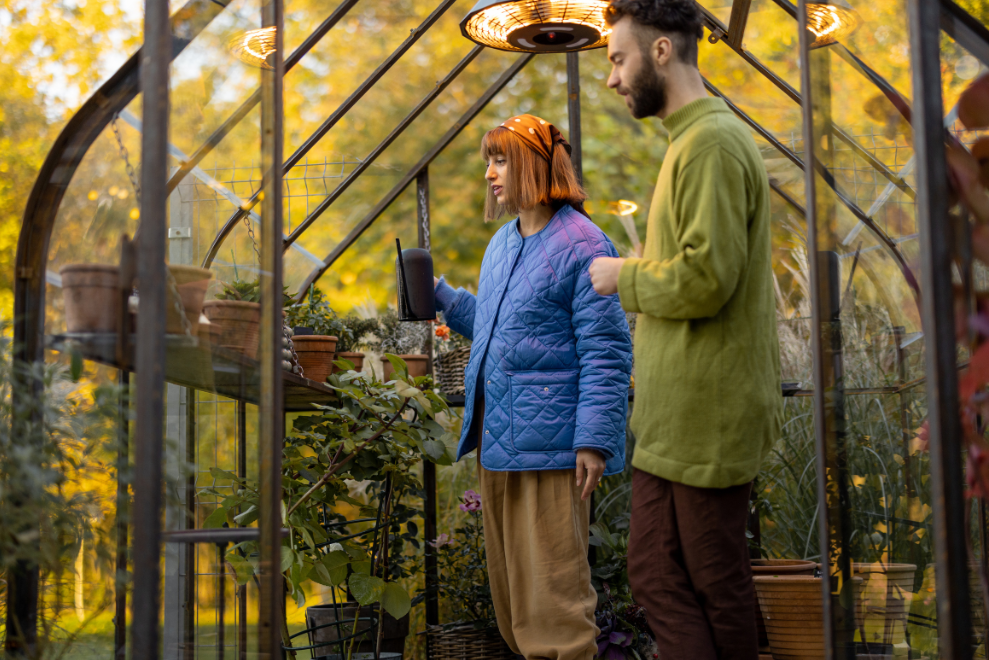- Maintenance tips & tricks
- 4-season garden care advice
- News from the gardening world
- Innovations & new product launches
Ask the Experts on 0800 669 6327 Mon - Fri 9am-5pm - Sat 10am-4pm or Contact us
Ask the Experts on 0800 669 6327 Mon - Fri 9am-5pm - Sat 10am-4pm or Contact us

Every year brings its successes and failures. The hot summer of 2022, meant many had poor runner bean crops, a cooler summer this year brought us heavy crops. It’s just the way it goes!
So what to do in our December garden?
Well we need to tidy up for the winter and plan for next year – so let’s get to it and see what we need to do in the various garden areas.

The good news is that if the lawn is very wet or frosty – keep off it and read a good book!
Leaves are late falling in many areas this year. Collect these leaves for composting regularly. This ensures maximum light gets to the grass to keep it healthy during the winter.
If the weather is mild and the grass continues to grow, mow if necessary with mower blades at the highest setting.
Repair any damaged lawn edges.
Don’t leave the mower in the shed to get rusty. Carry out essential maintenance or take it to your local agent for a service.

The herbaceous border, will need some work!
Cut back any remaining fading flower stems.
Lift and separate large clumps of herbaceous perennials, it will improve their vigour.
You can also take root cuttings of some plants like phlox and poppies.
Sow seeds such as alpines that need a cold period to break dormancy and stimulate germination. Seed of summer bedding plants like begonias and geraniums that need a long growing period to flower can be started in a heated greenhouse.

Assuming the soil is still warm, sow winter-hardy broad beans such as ‘Aquadulce Claudia’ or a dwarf variety like ‘The Sutton’ in gardens exposed to windy weather. Cover the rows with cloches or tunnel fleece.
Harvest late summer root crops such as carrots, swedes, turnips and parsnips.
December is the month to sow varieties bred for giant onions in summer.
Trim off yellowing basal leaves from brassica crops to prevent disease and cover with netting to protect from pigeons.
Thinking ahead to next year, dig out a trench for your runner beans. You can gradually fill this with kitchen vegetable trimmings to improve fertility and drainage in the spring.
If you have not already done so, make a plan of where you have grown your different vegetables and rotate them to another area next year.

Strawberry crop not so good this year? If the plants are over three years old, then their yield will be starting to decline and they may have virus problems. Time then to begin preparing a new site and consult the catalogues for some new plants for next spring delivery.
Plant bare root cane fruit such as raspberries, currants and gooseberries whilst dormant.
Don’t forget your rhubarb, if it’s well established it may be time to give it a boost by digging it out splitting the old crowns and replanting. You will increase the plants vigour and consequent cropping.
On a fine day, make sure your secateurs are sharp and set about pruning your apple and pear trees.(except those grown in a fan shape against a wall)

Get those secateurs and loppers sharpened, they will be doing some work this December!
Prune Hybrid-tea roses down by half to prevent winter ‘wind rock’ loosening the roots. Complete the final pruning later in winter.
Prune climbing roses and honeysuckles.
Prune acers and vines and prune and shape most deciduous shrubs in general.
Leave faded flower heads on hydrangeas which will protect developing buds below from winter frosts.
Plant ‘bare root’ shrubs and trees if the ground is free from frost. They represent far better value than container grown plants at this time of year.

December is the time to prune grapes in the greenhouse or conservatory.
Its ‘clean the greenhouse ‘ time if not already done.
Empty the greenhouse and scrub down the glass and frame inside and out with disinfectant, paying particular attention to gulley’s and joints where pests and disease spores can lurk.
Replace any ailing pot plants, taking the opportunity to trim off any yellowing leaves and check for pests.
Remember to be sparing with the watering during winter as the plants are semi-dormant.
So lots to look forward to for next year! For now though, it’s a case of put your feet up and enjoy the Christmas festivities – with maybe just the occasional glance in next years seed and plant catalogues!
A Happy Christmas and New Year to all our readers!